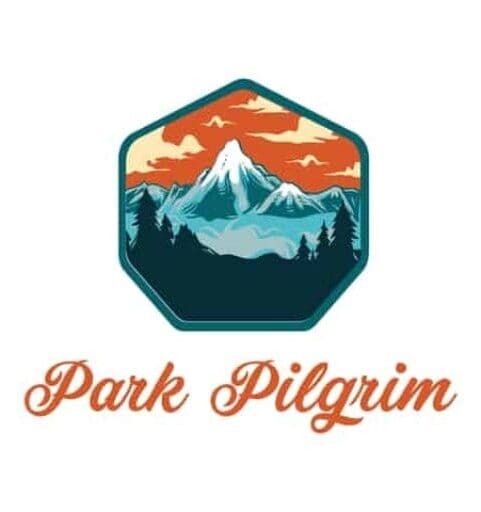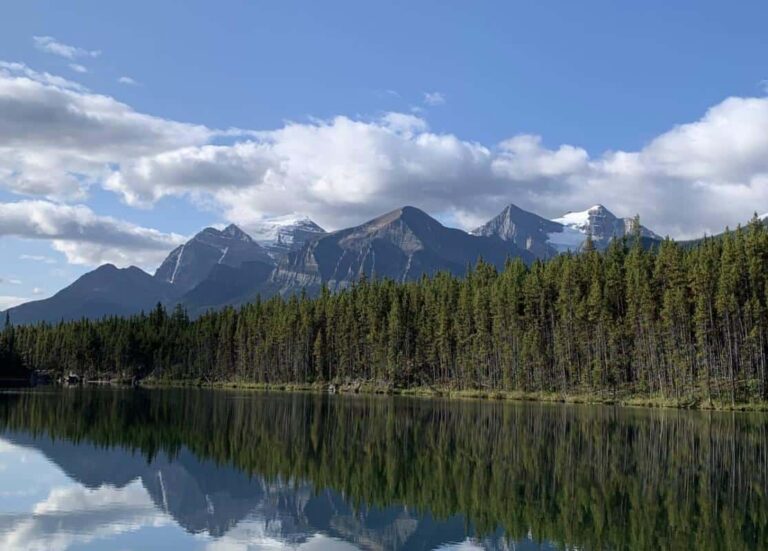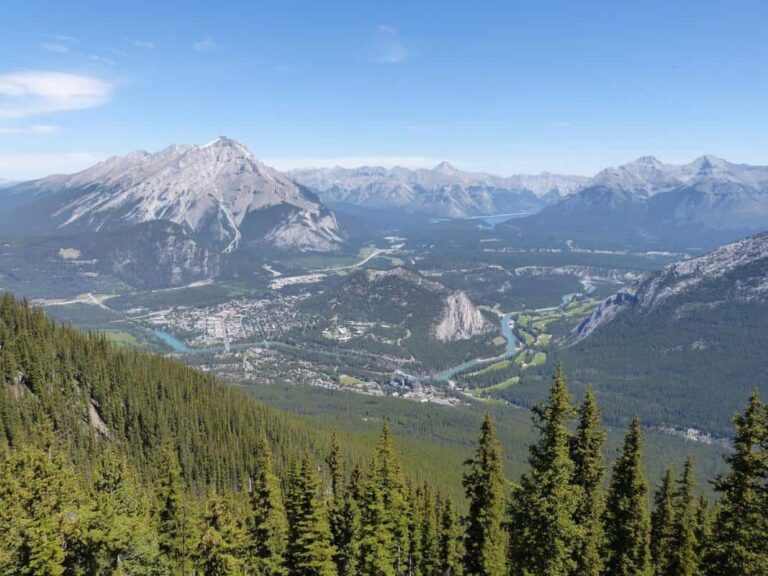Beauty Beyond Banff: Worthy Destinations Outside the Park
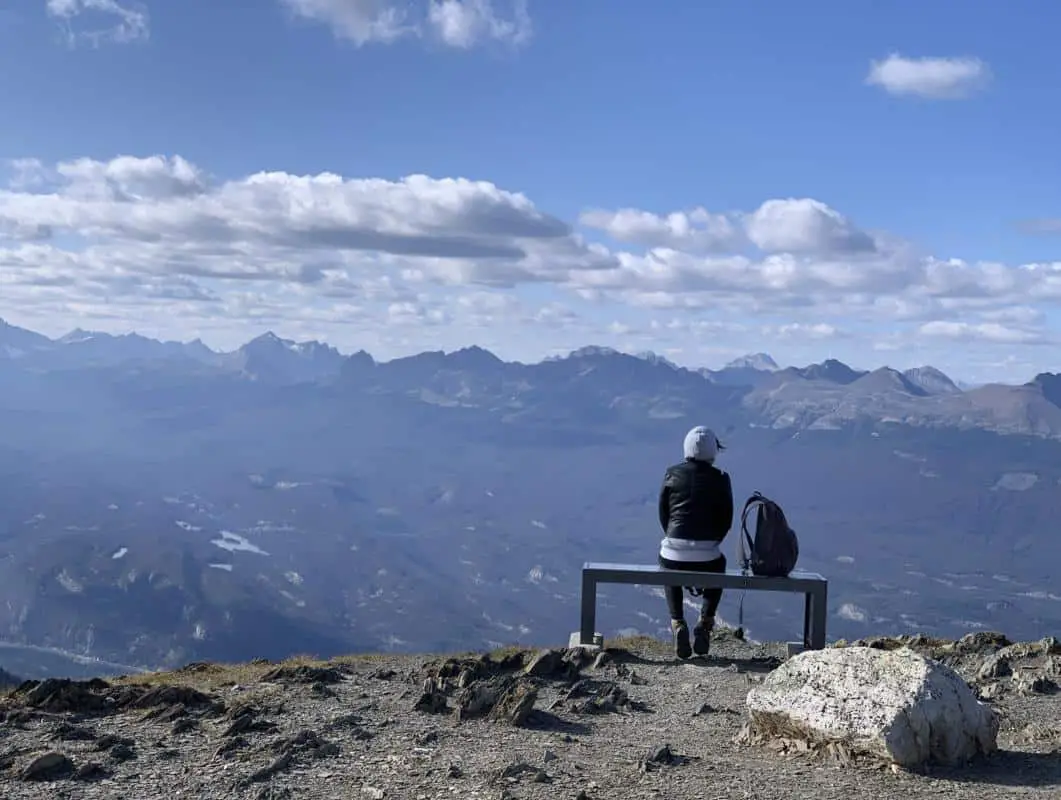
Banff is big enough to keep you entertained for weeks, but that doesn’t mean you should stay within the park’s boundaries. When staying in Banff or Lake Louise, you can easily visit many worthy places outside the park that are not too far away. In this post, I hand you some splendid ideas for your to-do list.
As Banff is just a tiny part of the Rocky Mountains, there’s much more to see and do in the park’s vicinity. Of course, you can expect more natural splendor, but there are also some lovely places to visit to go shopping or explore the town or city.
You’ll find a mix of the two in this post. There are always more places of interest that you could add to such a list, but at least I know by experience that these are worth it.
Yoho National Park
Bordering on the northwest side of Banff National Park, this is one of the most prominent places to go. The drive from Lake Louise to the visitor center in Field, BC, is a mere 26.5 km (16.47 mi).
The park in British Columbia is tiny (about one-fifth of Banff’s size), making it easy to visit the park’s major attractions, without having to drive a lot. Convenient, to say the least.
Its waterfalls, vertical rock walls and impressive peaks attract tourists worldwide.
Emerald Lake
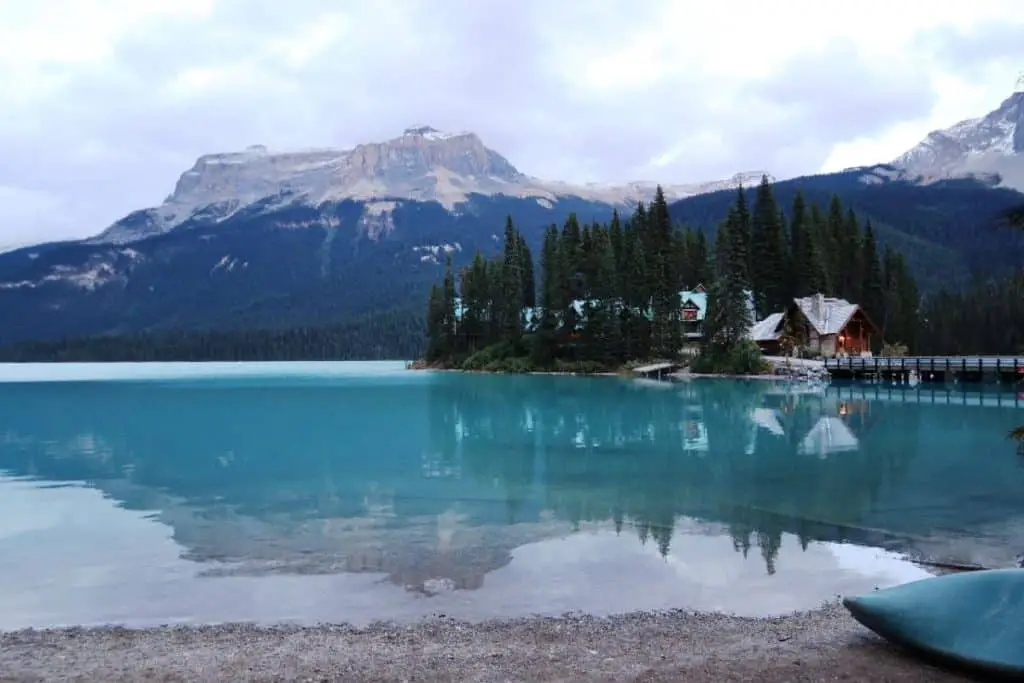
Probably the main reason for people to visit Yoho National Park is the stunning Emerald Lake. It has the same jade-colored water many Banff lakes are famous for (hence the lake’s name). Furthermore, it’s surrounded by steep peaks similar to the Dolomites mountain range in Italy. Combining this with the picturesque Emerald Lake Lodge on the peninsula that stretches into the lake makes this a dream-like destination.
There are ample hiking possibilities in the area, some easy, some difficult. If you fancy a leisurely walk to enjoy the marvelous views the lake provides, there’s an asphalted trail skirting the lake’s western shore. It’s very accessible and family-friendly.
If you care for lunching, dining or drinking at this spectacular location, the Emerald Lake Lodge will not disappoint. You can visit Mount Burgess Restaurant for breakfast and dinner and the Kicking Horse Lounge for drinking cognac, port, scotch, regional micro-brewed beers or other tasty drinks. And then there’s also the Cilantro Café, a grab-and-go place for casual bites like grilled sandwiches, pizza and soup.
If you’re staying at the Lodge and want to take some delicious snacks, sandwiches or beverages while you hike through the lake’s area? You can pick up a so-called Explorers Lunch. Just order it the night before and you’re good to go.
Emerald Lake Lodge
Address: 1 Emerald Lake Road
Phone: +1 250 – 343 6321
Website: crmr.com
E-mail: info@crmr.com
Takakkaw Falls
The park’s tall, vertical rock walls are home to the second-highest waterfall in Canada, the Takakkaw Falls. Measuring a whopping 373 meters (1224 ft), it’s only 8 meters lower than the Empire State Building (without the spire), to give you an idea of its size.
The waterfall is fed by the melting water of the Daly Glacier above, which is on the eponymous mountain. You can imagine the water coming down with impressive thunder from a waterfall this high. The drop is divided into four parts. The second drop is the biggest, counting in at 254 meters (833 ft).
The fall is most impressive in July when the glacier’s melting water volume is at its peak.
Takakkaw is easy to reach. From Field, the Yoho Valley Road leads directly to the falls. It’s a mere 17.8 kilometers (11.1 mi) or a 25-minute drive. You can park your car there. A ten to fifteen-minute walk takes you to the viewpoint.
Natural Bridge
Another famous natural phenomenon in Yoho National Park is the natural bridge. This is a natural rock formation partially carved out by the Kicking Horse River that runs beneath. While you could cross the river here, it’s not exactly a bridge by the true definition of the word. It’s more like two rocks wedged together, allowing you (in theory) to cross the river.
The natural bridge is en route to Emerald Lake (see above), so it should conveniently fit your itinerary when you intend to visit the abovementioned lake.
While the natural bridge is not much more than an exciting feat of nature that, by itself, won’t keep you longer than five minutes, its setting, the dramatic backdrop of the Kicking Horse River and the peaks surrounding it make it a must-see.
Wapta Falls
While the Wapta Falls is not nearly as high as the Takakkaw Falls, it’s even more impressive if you ask me. Atr 107 meters (351 ft) wide and 18 meters (59 ft) high are the biggest falls in the Kicking Horse River. As you can imagine, it’s thunderous and impressive and set in a stunning location.
It requires a bit of effort to get there as the path from the parking lot to the Wapta Falls is 4.8 kilometers (2.98 mi) out and back (allow up to 90 minutes to walk to the falls and back to the parking lot), but it’s worth every bit. Besides, the trail leading up to the waterfall is easy and beautiful.
This waterfall is an experience all in itself. The thundering clamor of the water plunging in the middle of the Rockies make you experience pristine nature at its wildest.
Once at the waterfall, the path descends to the riverbed, where you can view the fall up close. If you’re going there, prepare to get wet as the spray carries far.
Jasper National Park
Visiting Jasper Park is the obvious thing to do for most visitors to Banff. It’s the second most visited national park in Canada, bordering Banff, and is just as beautiful. To summarize this park in a couple of paragraphs doesn’t do justice to Jasper. However, covering this park fully would require many blog posts, so I allowed myself to pick the arguably most exciting and/or most accessible attractions to visit.
(Gondola to) Whistlers Mountain
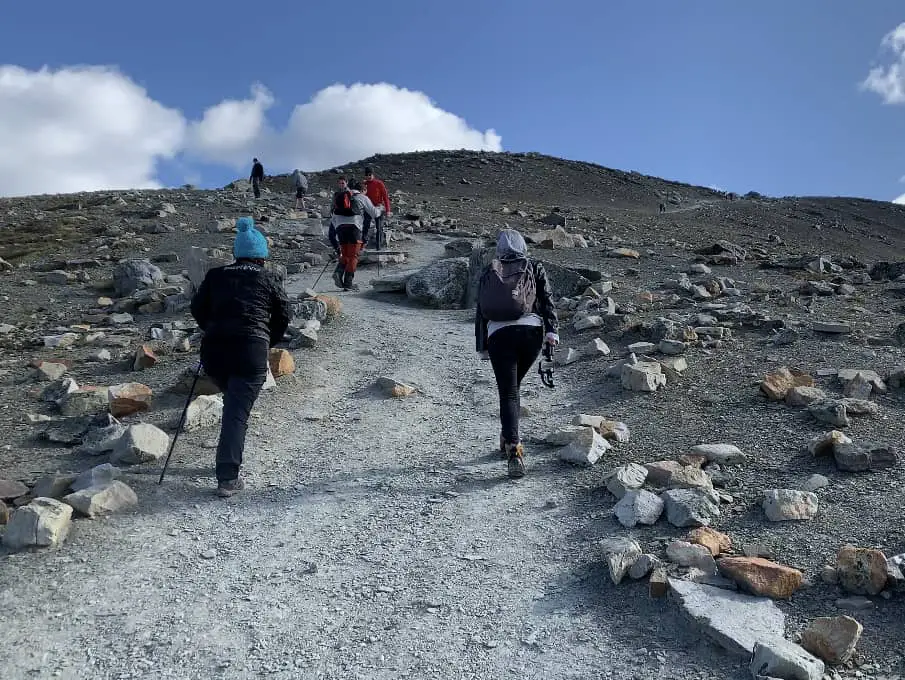
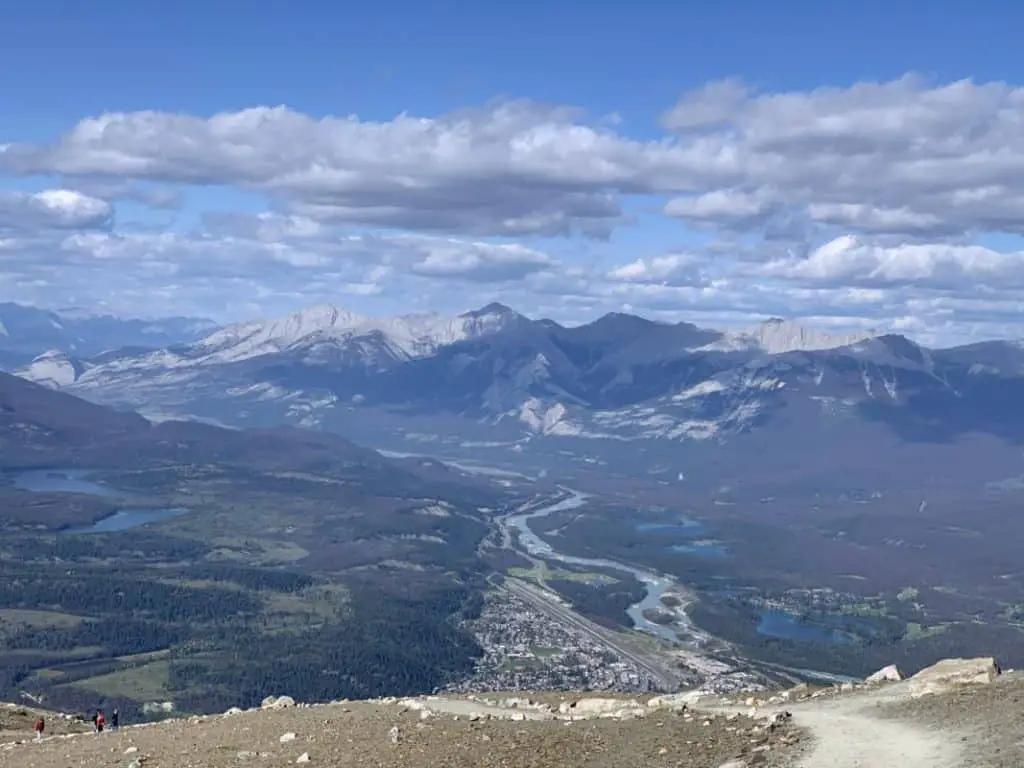
Bordering the town of Jasper, you’ll find the 2,463 meters (8,081 ft) high Whistlers Mountain. You can either hike to the top or take the convenient Jasper SkyTram at the foot of the mountain. The hike is beautiful and not too strenuous.
If you choose to take the SkyTram (right in front of the station, there’s quite a bit of parking space), a 7.5-minute gondola ride takes you close to this renowned mountain’s top.
You’ll get off at an altitude of 2,263 meters (7,425 ft). To reach the summit, you need to walk 1.4 kilometers (0,87 mi) and gain another 200 meters.
It’s a steep and rocky path. Make sure to take a windproof jacket. The strong wind can be mighty cold. Oh, and maybe good to know that the mountain gondola station has a small souvenir shop where you can get drinks and snacks before you climb to the top.
Once at the summit, Whistlers Mountain provides a fantastic view of Jasper, the Athabasca Valley and the surrounding mountain peaks all the way to Mount Robson in British Columbia, the highest peak of the Canadian Rocky Mountains.
Jasper SkyTram
Address: Whistlers Road, Jasper
Phone: +1 780 – 852 3093
Website: jasperskytram.com
E-mail: res@jasperskytram.com
Maligne Lake
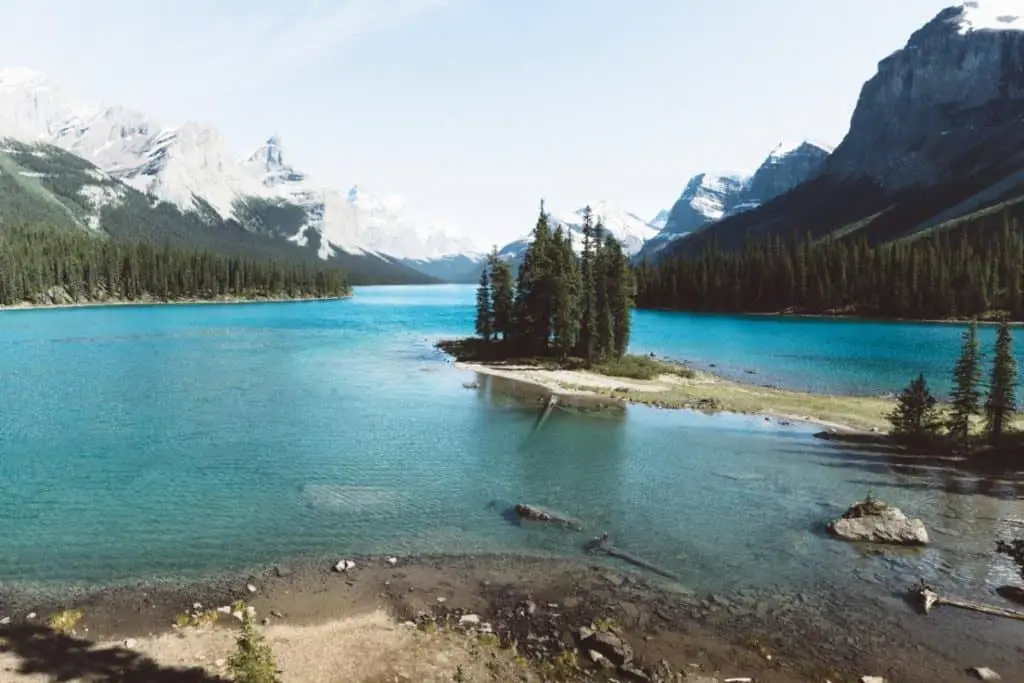
Undoubtedly the most famous lake in Jasper National Park. Probably also the most beautiful. Famous for the ionic and enchanting image of Spirit Island and its handful of spruces. It takes a boat trip to get there and mimic this famous shot.
The boat departs from the docks near the lake’s boathouse, named after Donald’ Curly’ Philips, who took his guests on fishing and hunting trips. It dates from 1928, making it one of the older buildings in Jasper National Park. You can also rent canoes at the boathouse.
Maligne Lake, situated 48 kilometers (30 mi) from Jasper, is the largest glacially fed lake in the Canadian Rocky Mountains. The boat trip (CAD 77) takes about ninety minutes and gives you a good impression of the sheer size of the lake and, most importantly, the unparalleled beauty of the lake and its surroundings.
Fancy a drink and a quick bite after the trip? The Maligne Chalet and Guest House on the lakeshore offers tea, sandwiches, scones and other pastry.
This characteristic log building is worth a visit in any case. It dates from 1927 and is a national historic site. And it offers a magnificent view across the lake.
You can book a boat tour through Maligne Lake Boat Cruise:
Address: Maligne Lake Road
Phone: +1 866 – 606 6700
Website: malignelakeboatcruise.com
E-mail: info@malignelakeboatcruise.com
Maligne Canyon
Maligne Canyon is the deepest (slot) canyon in Jasper National Park. It’s about 2 meters wide (6.6 ft) and some places are more than 50 meters (164 ft) deep. It ultimately confluences with the Athabasca River.
Expect one of the most spectacular sights in this rocky gorge. The six bridges crossing the canyon provide excellent photo opportunities. You can also visit the canyon making for a spectacular, totally different appearance of this spectacular natural phenomenon.
You have three trails that follow the canyon of increasing difficulty. There’s the short and easy walk, covering two of the six bridges and it takes about 20 minutes to complete.
The walk of medium difficulty spans three bridges and takes about 30 minutes if you want to reach the third bridge and 40 minutes if you want to include the fourth bridge in your trip as well.
The most extended walks include the fifth and sixth bridges. With 2 and 3 hours to the fifth and sixth bridge, these hikes are much longer and (therefore more strenuous), but the spectacular views and the experience are well worth it.
Reaching Maligne Canyon is easy. It’s only 11 kilometers (6.8 mi) from Jasper. Before you get to the canyon, you’ll pass the Maligne Lookout, which allows for stunning views across the valley.
Kananaskis Country
Kananaskis Country is not a national park, but its area contains a provincial park, recreation areas, an RV park and ecological reserves. There’s a 36-hole golf course, a hotel, an alpine ranch and two ski areas (including Canmore’s Nordic Centre (see above). There’s also Kananaskis Village (80 km (50 mi) from the town of Banff), a resort community.
Highway 40 takes you down Kananaskis Country, providing stunning views of the Rocky Mountains, including dirt roads and lakes, of which Barrier Lake is the most prominent. You’ll also find numerous hiking opportunities along the way.
Calgary
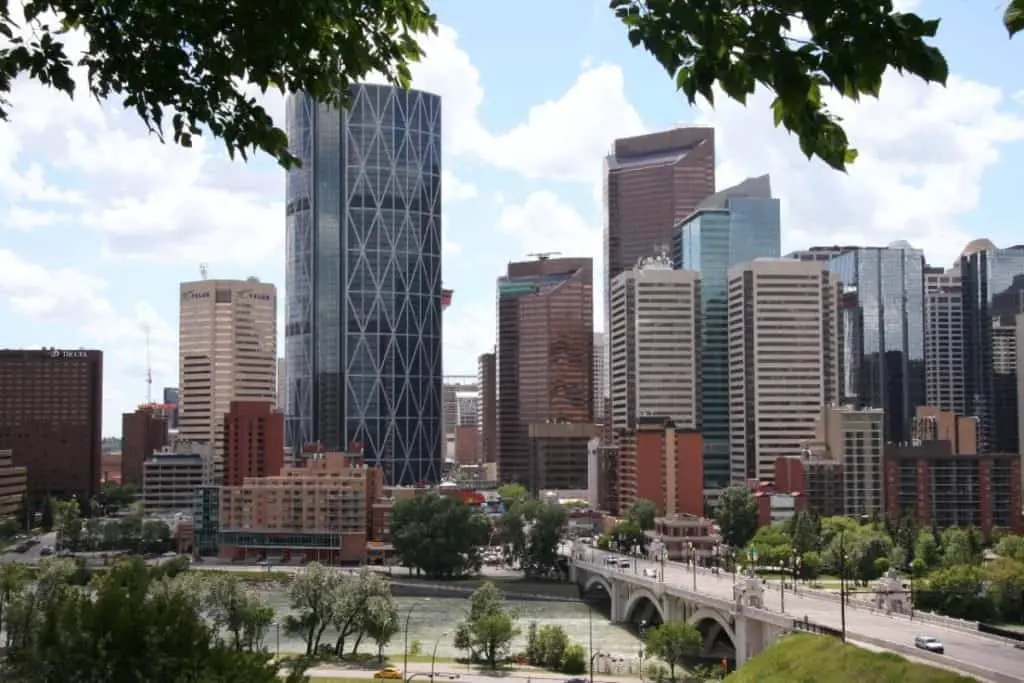
Tired of seeing nothing but wild nature all day (are you?), want some urban vibes shaking you up a little, or fancy a good old-fashioned shopping spree? Then a trip to Calgary is the way to go!
This city of more than 1,3 million people has everything you can imagine (except for sandy ocean beaches). No way you’ll get bored in the Manhattan of the prairie!
The Calgary Stampede
If you’re in Banff during the first half of July, you shouldn’t miss the Calgary Stampede. This annual ‘biggest’ rodeo in the world gives you good old western vibes making it hard to suppress a heartfelt ‘yeehaw!’. This famous rodeo lasts ten days straight, so you should be able to fit it into your schedule one way or the other.
The Stampede very much exhumes Calgary’s culture and identity of yesteryear. No wonder the city’s nicknames are ‘Cow Town’ and ‘Stampede City’.
You can see cowboy action from the frontier days, including bull riding, steer wrestling (also known as bulldogging), bareback bronc riding, and chuckwagon racing in a grand stadium with many cowboys wearing impressive cowboy hats and boots.
Aside from the rodeo, the Calgary stampede also serves as an exhibition, festival and market. So expect parades, concerts, shows and the likes. It’s a massive event with 1.2 million visitors over ten days in 2019 (the last pre-corona year).
The City Center
While the center of Calgary is not your typical shopping district, it’s still worth checking out for many reasons.
Visit the Olympic Square, for instance. It was built for the 1988 Winter Games. Or the 190.8 meters (626 ft) high Calgary Tower. The top floor at 157.6 meters (517 ft) provides extraordinary prairie views and the Rocky Mountains.
Furthermore, Calgary’s city center is full of tall skyscrapers, giving you the feeling that you’re in Manhattan, but with a much more relaxed vibe.
If you want to travel from the east to the west side of the center or vice versa, you can hop on the C-train, which allows you to travel for free in the center’s free fare zone on 7th Avenue.
For shopping, you can visit several malls inside some of the many skyscrapers, like Stephen Avenue, Eau Claire Market and Core Centre. The center also boasts many bars and restaurants of varying cuisines.
You also may want to check out Prince’s Island Park, bordering the highrise buildings of the center in the north and separated by the Bow River that flows around it. The park gives you an incredible view of the center with all the skyscrapers towering high above the trees. And of course it makes for a nice picnic or other relaxation.
Other cool things to see downtown:
- Calgary Zoo
- China Town
- Stampede Grounds
- Saddledome, the home of the Calgary Flames NHL team
Heritage Park Historical Village
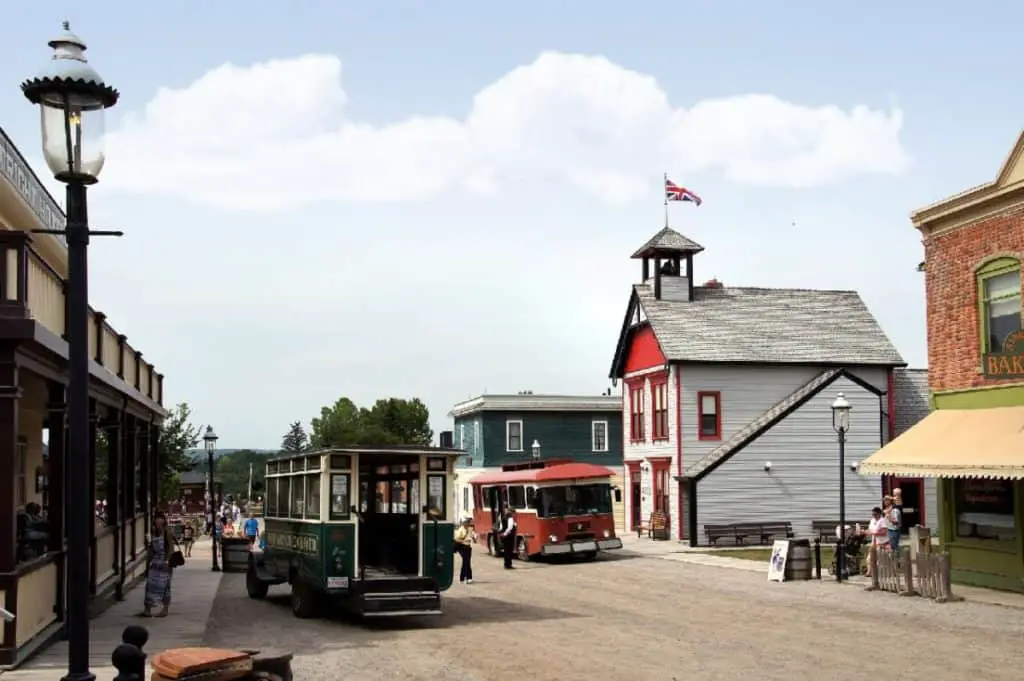
The Heritage Park Historical Village is Canada’s second biggest living history museum. It’s situated in the southwest part of Calgary on the banks of the Glenmore Reservoir (a primary source of drinking water for Calgary).
If you want to learn more about the history of western Canada, this is the place to go. The Heritage Park Historical Village covers the 1860s to the 1960s.
You’ll find authentic buildings from this era that were transported to this location or recreations of actual buildings that no longer exist. Horse-drawn vehicles take you around to explore the site.
The park is divided into four timeframes: 1864, 1880, 1910 and the 1920s to the 1950s, including unique items pertaining to each period. Also, you’ll find more than 100 exhibits, including a hotel, a bakery, a streetcar, a roundhouse, a trading fort and a working smithy.
Heritage Park Historical Village
Address: 1900 Heritage Drive Southwest, Calgary
Phone: +1 403 – 268 8500
Website: heritagepark.ca
E-mail: info@heritagepark.ca
Canmore
Canmore is located just outside the park, at only 25 kilometers from the town of Banff. It has approximately 16,000 residents and is also situated in the Bow Valley. It’s very easy to reach from Banff as the Trans-Canada Highway (Highway 1) runs through it. With the Rockies surrounding the city, Canmore is also very beautiful and absolutely worth a visit.
Downtown Canmore
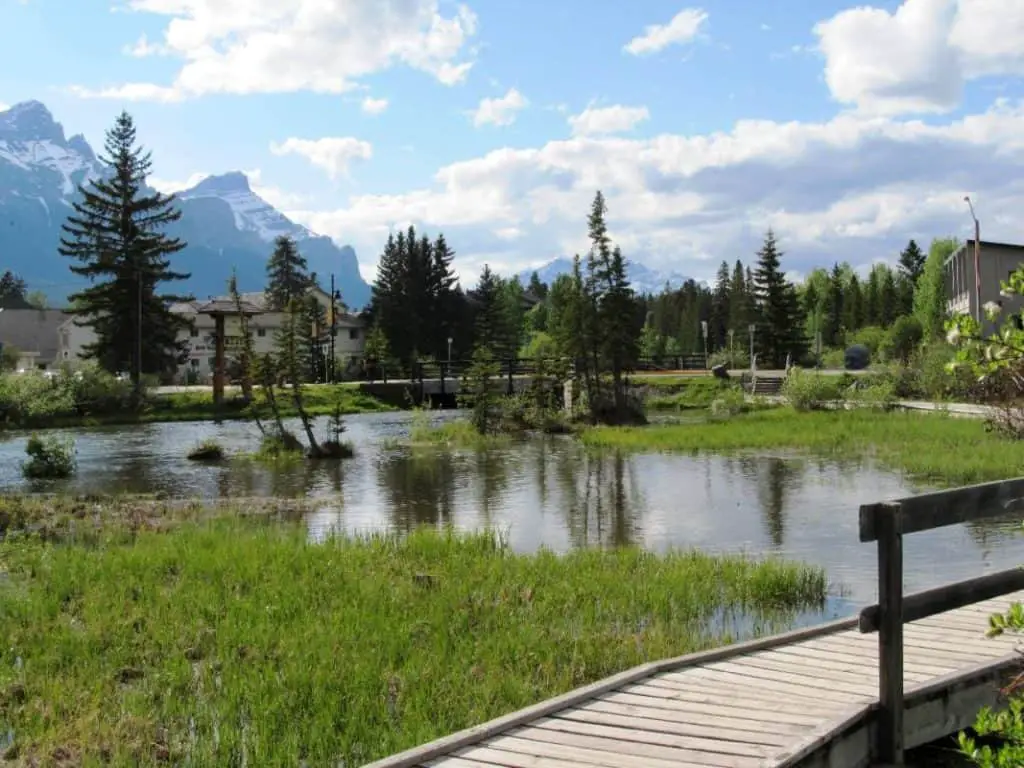
Downtown Canmore has a friendly western vibe, with lots of shopping and eating opportunities. Check the area between 8th and 10th street.
Besides the shops and restaurants, you can visit the Canmore Museum to learn about the town’s mining history or check out the ponds that border the center on the east. There’s a nice trail connecting them.
The Bow River borders the downtown area on the west side, making for pretty scenery as well. A trail alongside the river makes for some relaxed and beautiful walking. In the distance, the famous Three Sisters mountains spike against the sky.
Nordic Centre
Canmore has its own Nordic Centre, a heritage from the 1988 Calgary Winter Olympics, which was renovated in 2005. During the winter games, the biathlon and cross country skiing disciplines were held in the Canmore area.
The Nordic Centre is also a perfect mountain bike destination. If you want to rent a bike, Rebound Cycle on 902-8th Street is the bike rental place closest to the Nordic Centre.
The Centre is also home to an 18-holes disc golf course and you can start several hikes here. So there are many outdoor opportunities, less than 5 kilometers (3.1 mi) from the town’s centre.
Hike the Three Sisters
The Three Sisters comprise a trio of mountains bordering Canmore, providing a very easy-to-distinguish and stunning view. Their pointed peaks stand out from the other mountains in the area, and their more or less similar shape makes them seem to belong to each other.
They are called (from left to right) Little Sister (2,694 m (8,840 ft)), Middle Sister (2,769 m (9,084 ft)) and Big Sister (2,936 m (9,632 ft)).
You can hike up from the end of the Three Sisters Parkway. All three peaks involve scrambling. Hiking up Middle Sister is the easiest of the three; summiting Little Sister is the most challenging.
Radium Hot Springs
If you want to spend a nice day relaxing in a pool, Radium Hot Springs provides an excellent opportunity. It’s the biggest hot spring in the Rockies (including the US).
Sure, Banff has its hot spring pool on Sulphur Mountain, but the Radium Hotsprings provides a relaxing and vitalizing bathing experience in the Rocky Mountains without the clamor of the town of Banff.
You’ll find this hot spring just across the border in BC, three kilometers northeast of the village of Radium Hot Springs.
Besides the outdoor hot pool, there’s also a cool pool of 25 meters (27.34 yards), a restaurant and the place also offers relaxing massages.
Getting there requires a bit of a drive. Whether you’re staying in Banff or Lake Louise doesn’t matter much. The latter is closest at 131 km (81 mi). The distance from the town of Banff is 136 km (84 mi).
Radium Hot Springs
Address: 5420 BC-93, Radium Hot Springs
Phone: +1 800 – 767 1611
Website: hotsprings.ca
E-mail: through form on the website
If you want to know more about hot springs and their influence on your body, I recommend reading the post Guide to Hot Springs in the Banff Region.
Kootenay National Park
Just like Jasper and Yoho National Park, this destination deserves at least several posts, so the information below is a very brief overview of the possibilities. Besides Jasper and Yoho, you can also easily get to Kootenay National Park as it borders Banff.
It’s southwest of Banff National Park in British Columbia, and at 1406 km2 (543 sq mi), it’s slightly bigger than Yoho National Park. From Banff to the park’s border, it’s only 41 km (25.5 mi). From Lake Louise, 37 km (23 mi).
The park’s main attractions include the Radium Hot Springs (see above), although this town is just outside the park’s boundaries, Sinclair Canyon, Olive Lake, the Paint Pots and Marble Canyon. Furthermore, the park offers camping and endless hiking opportunities.
Distances Table
| DESTINATION | DISTANCE FROM BANFF | DISTANCE FROM LAKE LOUISE |
|---|---|---|
| Calgary, Center | 127 km (79 mi) | 183 km (114 mi) |
| Calgary, Heritage Park Historical Village | 132 km (82 mi) | 188 km (117 mi) |
| Calgary Stampede | 128 km (80 mi) | 184 km (115 mi) |
| Canmore Center | 25 km (16 mi) | 81 km (50 mi) |
| Canmore Nordic Centre | 28 km (17 mi) | 85 km (53 mi) |
| Canmore Three Sisters | 32 km (20 mi) | 89 km (56 mi) |
| Yoho, Emerald Lake | 93 km (58 mi) | 39 km (24 mi) |
| Yoho, Natural Bridge | 86 km (53 mi) | 32 km (20 mi) |
| Yoho, Takakkaw Falls | 92 km (57 mi) | 38 km (24 mi) |
| Yoho, Wapta Falls | 122 km (76 mi) | 67 km (42 mi) |
| Kootenay National Park | 41 km (25 mi) | 37 km (23 mi) |
| Kananaskis Country | 81 km (50 mi) | 136 km (85 mi) |
| Radium Hot Springs | 136 km (84 mi) | 131 km (81 mi) |
| Jasper, Maligne Lake | 335 km (208 mi) | 280 km (174 mi) |
| Jasper, Maligne Canyon | 298 km (185 mi) | 243 km (151 mi) |
| Jasper, Whistlers Mountain | 289 km (180 mi) | 234 km (145 mi) |
